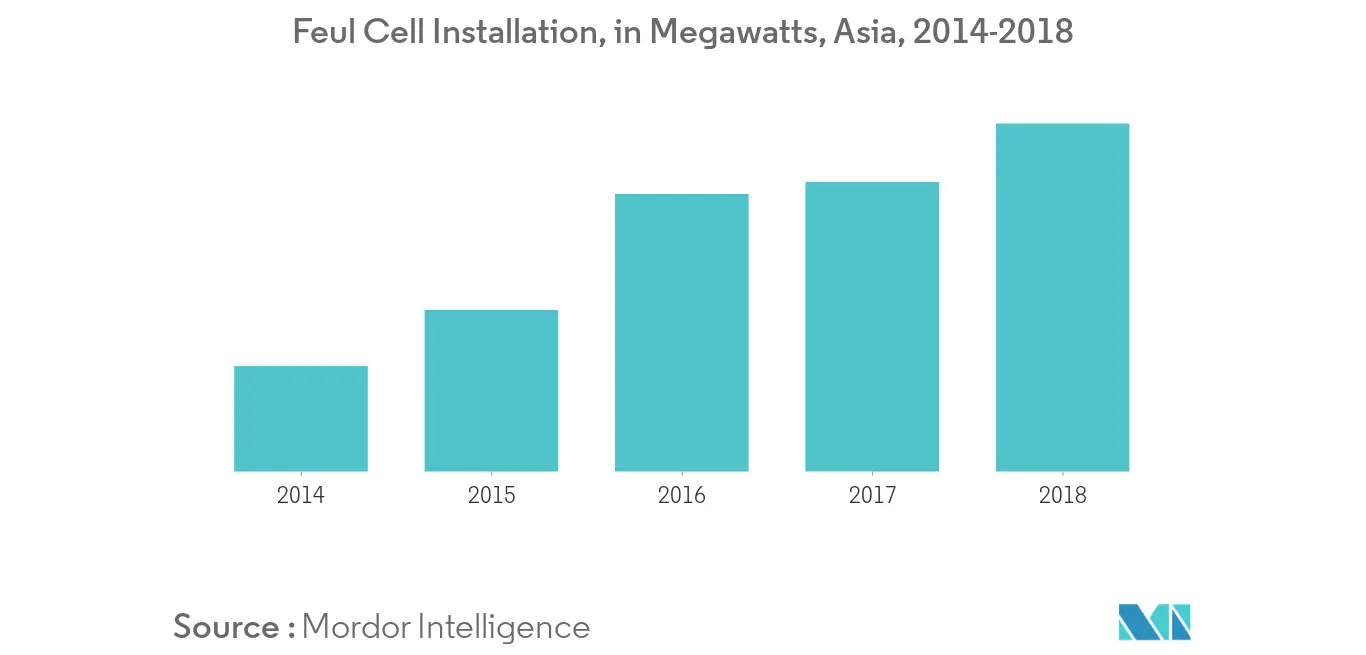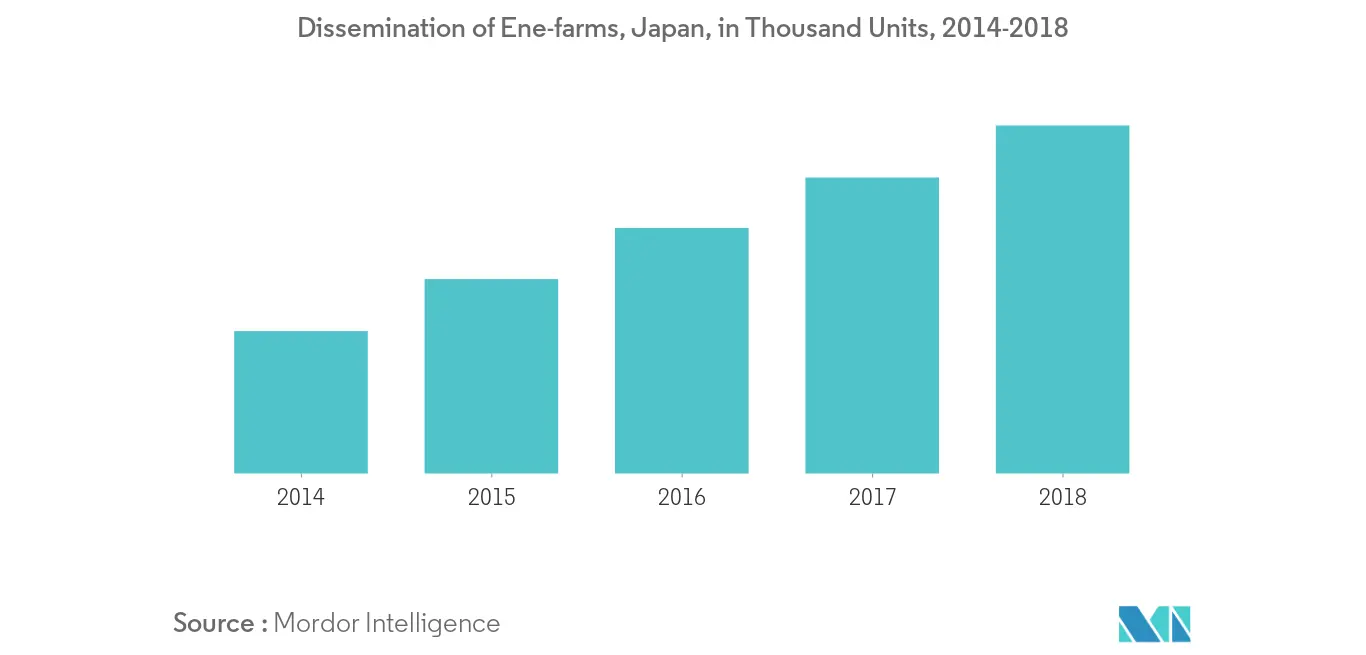Market Trends of Asia-Pacific Fuel Cell Industry
Transportation Sector to Dominate the Market
- Transportation sector has accounted for more than half of the market share in 2018 and is expected to continue its dominance in the coming years. The focus on clean energy usage in the transportation sector is creating increased opportunities for fuel cell business
- Japan and South Korea are expected to be pivotal in advancing the fuel cell electric vehicle technology, as Toyota and Hyundai-Kia claim to become the global leaders in fuel cell technology. Moreover, the phasing out of BEV incentives globally, from 2020, paralleled by government subsidies for fuel cell electric vehicles (FCEVs) in Asian countries, including China, Japan, and South Korea, is expected to open the floodgates to private sector investments and herald the start of a new era in fuel cell vehicle technology.
- There have been a massive increase in research and pilot testing of usage of fuel cells in transportation sector in order to increase efficiency and sustainability of fuel cell usage in vehicles.
- Japan had over 2800 fuel cell vehicles on road by end of 2018, the country has set a target of 40,000 fuel cell vehicles on road by 2020 and 80,000 by 2030.
- Therefore, with increase in fuel cell based vehicles, and phasing out of conventional fuel based vehicles, the market is expected to grow in forecast period.

Japan to Dominate the Market
- Japan has dominated the fuel cell market growth in 2018 and is expected to continue its dominance in the coming years as well. The region is expected to see an unprecedented increase during the forecast period.
- The country is leading in the region with vast applications of fuel cells, ranging from backup services for datacenters, combined heat and power for homes, automobile sector and many more. This is expected to provide a significant market growth for fuel cell market in the country.
- Japan had implemented one of the most successful fuel cell commercialization programs, Ene-farm programme, in 2015. The program led to the deployment of over 120,000 residential fuel cell systems. Japan has added nearly 50,000 units (roughly 35 MW) of residential micro-CHP fuel cell systems in 2018, under the Ene-farm programme.
- Tokyo Metropolitan Government's (TMG's) plan to power several operations in 2020 Olympic and Paralympics games, which will be held at Tokyo, using fuel cell technology has created ample business opportunity for fuel cell companies. Toyota is planning to sell 100 fuel cell powered buses, including PEM type before the game starts. Also, the Tokyo government has created a reserve of USD 350 million to subsidize hydrogen-based fuel cell cars and refuelling stations for the same.
- Therefore, the aforementioned factors are expected to drive the market in forecast period, similar to the trend witnessed in recent years.



